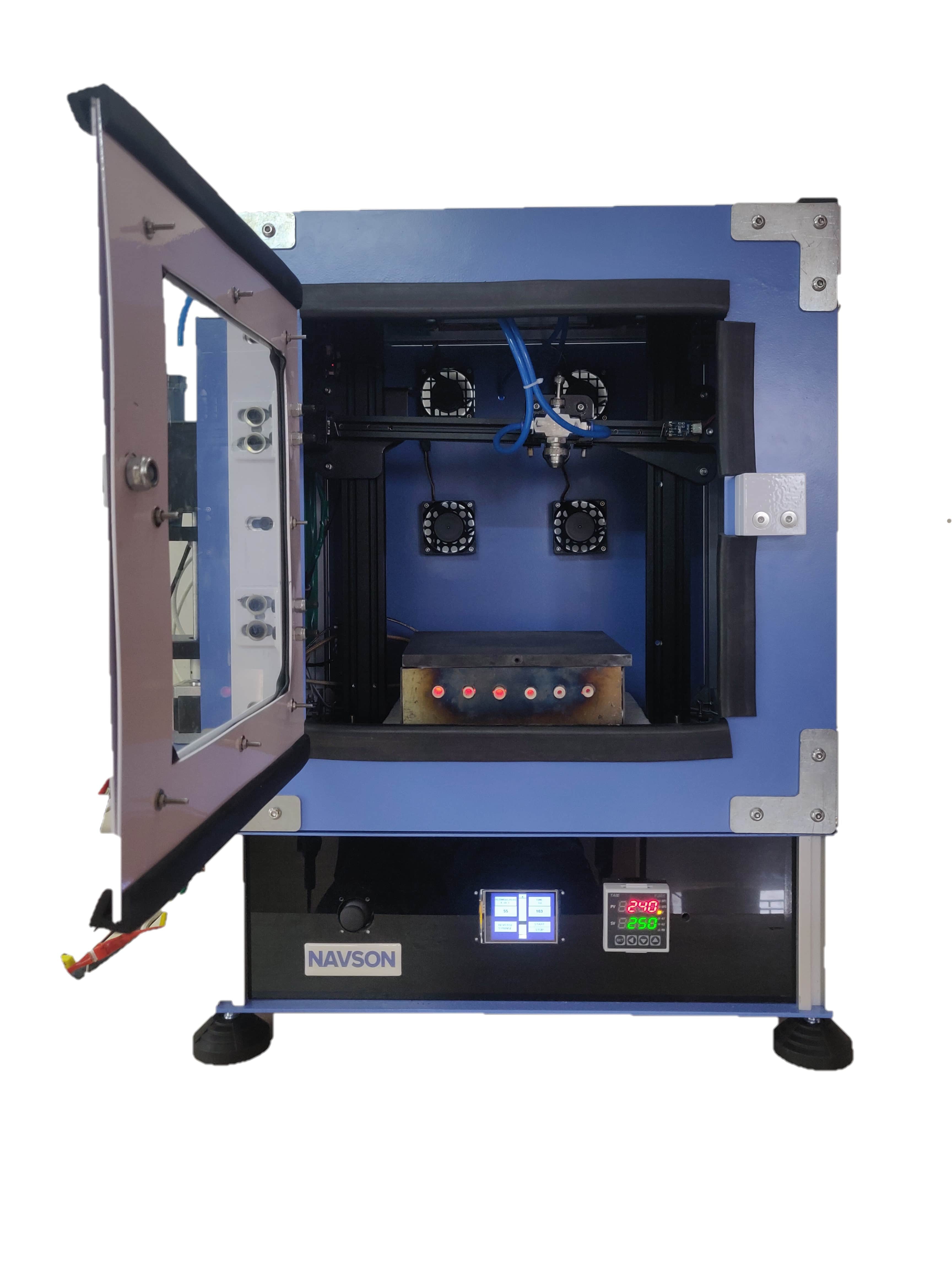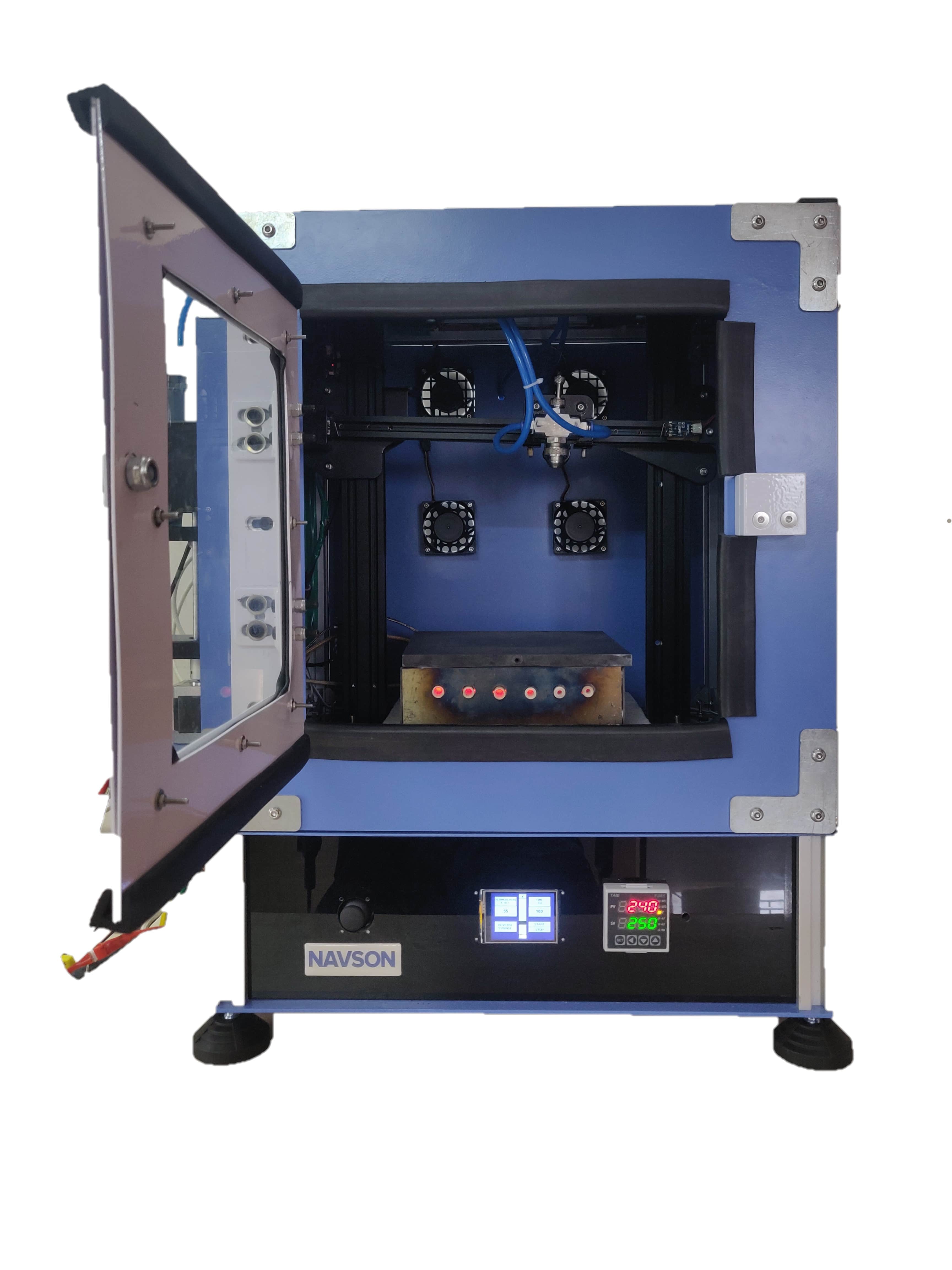
The B2B platform for the best purchasing descision. Identify and compare relevant B2B manufacturers, suppliers and retailers
Close
Filter
Result configuration
Continents
Select continent
Locations
Result types
Company type
Select company type
Industries
Select industry
Company status
Select company status preset
Number of employees
Min.
Max.
Founding year
CleanCap Technologies
Houston, United States
B
11-50 Employees
2021
Key takeaway
CleanCap Technologies is dedicated to improving both profits and the environment through innovative solutions, including expertise in pyrolysis. Their focus on waste conversion and reducing manufacturing impacts aligns with evolving technologies that enhance efficiency and support the circular economy.
Reference
Product
Pyrolysis
Pyrolysis
ETIA - Ecotechnologies
France
A
11-50 Employees
1989
Key takeaway
The company specializes in continuous pyrolysis processes for treating sewage sludge, emphasizing the production of energy-rich gas and high-quality solid products like biochar. Their innovative Biogreen® pyrolysis technology operates at high temperatures and is designed for converting biomass and waste into valuable resources, contributing to sustainable waste management and energy solutions.
Reference
Core business
Pyrolysis, torrefaction, gasification, carbonisation
Pyrolysis process for biomass and waste management - sludge, plastics and waste to energy conversion, syngas, biochar and heat production.
Glaesum Group
Nijkerk, Netherlands
A
1-10 Employees
1988
Key takeaway
The company emphasizes its commitment to a cleaner world through innovative solutions, including its focus on pyrolysis technology, which is highlighted as a key thermochemical process. This aligns with their goal of enhancing production processes and developing high-quality products.
Reference
Product
Pyrolysis Technology | Electron
Looking for more accurate results?
Find the right companies for free by entering your custom query!
25M+ companies
250M+ products
Free to use
PyroCore
Bristol, United Kingdom
A
11-50 Employees
2018
Key takeaway
PyroCore offers a straightforward, turnkey pyrolysis-based technology for on-site waste treatment, promoting a responsible and economically viable alternative for waste valorization. Their approach aligns with zero waste and circular economy goals, making it a pertinent solution for effective waste management.
Reference
Core business
Pyrocore - Valorisez vos déchets.
Zero déchet, économie circulaire, neutralité carbone. Avec Pyrocore, il devient possible d’entrer dans une filière alternative, responsable et économiquement viable.
ThermoChem Recovery International Inc
Baltimore, United States
B
11-50 Employees
1996
Key takeaway
The company highlights its expertise in pyrolysis, a thermal conversion process that effectively transforms carbon-containing materials into valuable liquids, solids, and gases. This innovative approach is particularly promising for generating useful chemicals from biomass and waste.
Reference
Core business
ThermoChem Recovery International, Inc.
APChemi
Mumbai, India
D
11-50 Employees
2004
Key takeaway
APChemi is a leading source of information on pyrolysis, offering expertise in pyrolysis plants, business models, and the plastic pyrolysis market, making it a valuable resource for those interested in this technology.
Reference
Core business
PyrolysisPlant.com - a Leading Pyrolysis Blog
Know 100% about the pyrolysis plant, pyrolysis business models, plastic pyrolysis, pyrolysis market and more!
PyroCCS - The Biochar Company (LCA-based Carbon Credits)
Cologne, Germany
A
11-50 Employees
2021
Key takeaway
PyroCCS is focused on advancing sustainable technology through its innovative pyrolysis systems that integrate carbon capture and storage. By 2035, these systems aim to significantly contribute to climate change mitigation and the transition towards a carbon-neutral future.
Reference
Product
Technology – PyroCCS
APChemi
India
D
- Employees
-
Key takeaway
APChemi is a leader in pyrolysis, utilizing patented technologies to transform plastic and biomass waste into valuable resources. Their expertise in pyrolysis and pyrolysis oil purification highlights their commitment to sustainable innovation and addressing environmental challenges.
Reference
Core business
Pyrolysis & PyOil Purification Leaders | APChemi
Pyrolysis Oil Producer | Pyrolysis Plant Supplier | 12 Patents & 48 Projects | Leaders in Pyrolysis & Pyrolysis Oil Purification Technology | APChemi
Nettenergy BV
Boskoop, Netherlands
A
1-10 Employees
2006
Key takeaway
Nettenergy specializes in developing pyrolysis installations that convert biomass from plants into renewable energy and materials. By focusing on local markets where raw materials are readily available, Nettenergy empowers resource owners to produce electricity, heat, and biobased products through advanced pyrolysis technology.
Reference
Product
Technology - Nettenergy
The pyrolysis technology of Nettenergy is obtained from our own research and development activities. There is no collaboration with universities or other companies in this domain. For the pyrolysis products, there is active collaboration with third parties and universities to develop derived products and applications of these products. So far the following technologies have been […]
Frontier Laboratories (HQ Japan) SEA & India
Kōriyama, Japan
A
51-100 Employees
1991
Key takeaway
Frontier Laboratories is a market leader in the analytical pyrolyzer instrument industry, offering advanced pyrolysis tools, such as their Py-GCMS, which enhance lab capabilities for characterizing materials in the polymer, plastic, paint, and rubber sectors.
Reference
Core business
Pyrolyzer | Frontier Lab | Pyrolysis for polymer characterization
We offer Pyrolyzer which is combined with GC-MS to expand your lab capabilities for materials characterizations in polymer, plastic, paint & rubber industries.
Technologies which have been searched by others and may be interesting for you:
A selection of suitable products and services provided by verified companies according to your search.

Product
Spray Pyrolysis Equipment NTPY01
Go to product
A selection of suitable use cases for products or services provided by verified companies according to your search.

Use case
Why and When You Need a New Spray Pyrolysis:
scientific research laboratories, new spray pyrolysis system, advanced materials, trisulfide solar cell
Top Causes for Seeking Better Spray Pyrolysis Equipment People may want to modify their spray pyrolysis equipment for a variety of reasons. Like when they are facing issues in meeting production demands, or getting uneven product quality, or facing high operating expenses, and / or operational complexity. So people are driven to look for a better spray pyrolysis system for a variety of reasons, including outmoded technology, unreliable performance, poor customer support, constrained capacity, safety issues, and environmental considerations. Additionally, the need for an upgrade may be brought on by the need to take advantage of new research opportunities, greater safety features, environmental friendliness, compliance with regulations, decreased production costs, expanded production capacity, and improved product performance. E.g.: The large-scale synthesis of nanomaterials is being revolutionised by the Flame Spray Pyrolysis (FSP) method, which was recently unveiled by Argonne National Laboratory. FSP may produce a wide variety of nanomaterials, including oxide, alloy, silicon, metallic, and particle films, and is not constrained to a single range. It is a flexible game-changer for the sector. Source: bit.ly/42u8jay

Use case
Why and When You Need a New Spray Pyrolysis:
scientific research laboratories, new spray pyrolysis system, advanced materials, trisulfide solar cell
Top Causes for Seeking Better Spray Pyrolysis Equipment People may want to modify their spray pyrolysis equipment for a variety of reasons. Like when they are facing issues in meeting production demands, or getting uneven product quality, or facing high operating expenses, and / or operational complexity. So people are driven to look for a better spray pyrolysis system for a variety of reasons, including outmoded technology, unreliable performance, poor customer support, constrained capacity, safety issues, and environmental considerations. Additionally, the need for an upgrade may be brought on by the need to take advantage of new research opportunities, greater safety features, environmental friendliness, compliance with regulations, decreased production costs, expanded production capacity, and improved product performance. E.g.: The large-scale synthesis of nanomaterials is being revolutionised by the Flame Spray Pyrolysis (FSP) method, which was recently unveiled by Argonne National Laboratory. FSP may produce a wide variety of nanomaterials, including oxide, alloy, silicon, metallic, and particle films, and is not constrained to a single range. It is a flexible game-changer for the sector. Source: bit.ly/42u8jay
Pyrolysis is a thermochemical decomposition process that occurs in the absence of oxygen, resulting in the breakdown of organic materials at elevated temperatures. This technique is often used to convert biomass, plastics, and other waste materials into valuable products such as bio-oil, syngas, and char. The process involves heating the feedstock to high temperatures, typically between 300°C to 900°C, which leads to the breakdown of complex molecules into simpler compounds. The products generated through pyrolysis can be utilized for various applications, including fuel production, chemical feedstock, and soil enhancement. Notably, this method offers an environmentally friendly alternative for waste management, as it significantly reduces the volume of waste while generating energy-rich outputs.
Pyrolysis is a thermal decomposition process that occurs in the absence of oxygen. During this process, organic materials such as biomass or waste are heated to high temperatures, typically between 300°C to 800°C. As the material heats up, it breaks down into smaller molecules, resulting in a range of products including gases, oils, and char. The gases produced can be captured and utilized as fuel, while the oils can serve as a feedstock for further refining or chemical production. The remaining char can be used as a solid fuel or as a carbon-rich material for various applications. This method is increasingly recognized for its potential in waste management and energy recovery, as it converts unwanted materials into valuable resources.
1. Waste Management
Pyrolysis effectively reduces the volume of waste, converting various materials like plastics and biomass into useful products. This process minimizes landfill usage and lowers environmental pollution, making waste management more sustainable.
2. Energy Production
The process generates energy in the form of syngas, which can be used for heating or electricity generation. This renewable energy source contributes to energy security and reduces reliance on fossil fuels.
3. Resource Recovery
Pyrolysis allows for the recovery of valuable materials, such as oils and char, which can be repurposed for industrial applications. This recovery supports a circular economy, where materials are reused and recycled, reducing the need for new raw materials.
4. Lower Emissions
Compared to traditional incineration, pyrolysis produces significantly lower greenhouse gas emissions and other pollutants. This cleaner process helps in mitigating climate change and improving air quality.
Pyrolysis is a thermal decomposition process that can effectively process a variety of materials. Organic materials such as biomass are commonly used, including agricultural waste, wood, and other plant-based substances. Additionally, plastics are also suitable for pyrolysis, particularly those that are difficult to recycle through conventional methods. This process can convert plastics into valuable fuels and chemicals, contributing to waste management solutions. Furthermore, rubber, especially from used tires, can be processed to recover oils and carbon black, making pyrolysis a versatile method for material transformation.
The environmental impacts of pyrolysis are multifaceted. This thermal decomposition process converts organic materials into valuable products like biochar, oil, and gas while minimizing harmful emissions. Reduced Waste By processing waste materials, pyrolysis contributes to waste management solutions, decreasing landfill volumes and associated greenhouse gas emissions. Lower Emissions When conducted under controlled conditions, pyrolysis can result in lower emissions of pollutants compared to traditional incineration, thereby improving air quality. Additionally, the biochar produced can enhance soil health and carbon sequestration, further benefiting the environment.
Some interesting numbers and facts about your company results for Pyrolysis
| Country with most fitting companies | United States |
| Amount of fitting manufacturers | 9391 |
| Amount of suitable service providers | 8346 |
| Average amount of employees | 11-50 |
| Oldest suiting company | 1988 |
| Youngest suiting company | 2021 |
20%
40%
60%
80%
Some interesting questions that has been asked about the results you have just received for Pyrolysis
What are related technologies to Pyrolysis?
Based on our calculations related technologies to Pyrolysis are Water/Ocean Cleaning Technologies, Waste Management, Renewable Energy, Sustainable Fashion, Smart Grid
Who are Start-Ups in the field of Pyrolysis?
Start-Ups who are working in Pyrolysis are CleanCap Technologies, PyroCCS - The Biochar Company (LCA-based Carbon Credits)
Which industries are mostly working on Pyrolysis?
The most represented industries which are working in Pyrolysis are Oil, Energy and Gas, Other, Environment, Disposal and Recycling, Manufacturing, Chemicals
How does ensun find these Pyrolysis Companies?
ensun uses an advanced search and ranking system capable of sifting through millions of companies and hundreds of millions of products and services to identify suitable matches. This is achieved by leveraging cutting-edge technologies, including Artificial Intelligence.